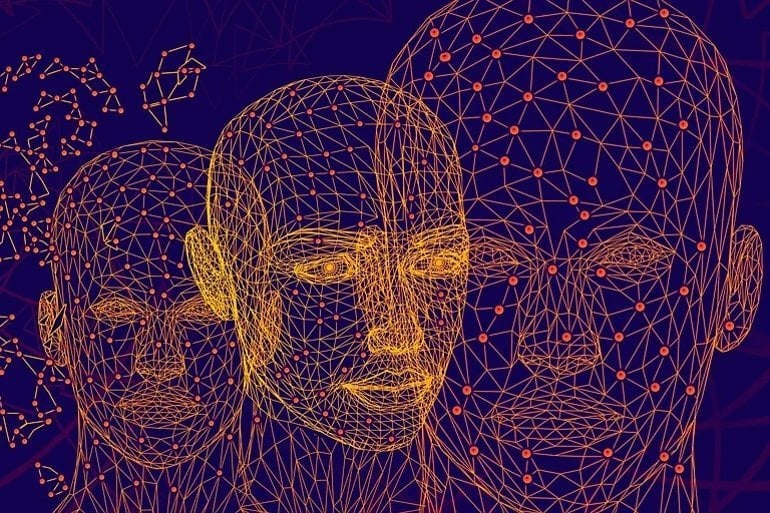Summary: Those who are more empathetic and those who score high on extraversion, agreeableness, and openness personality traits are more likely to focus on faces. Those with psychological disorders including depression, anxiety, and alexithymia tend to focus less on faces.
Source: PLOS
A person’s personality and psychopathology levels may be associated with how strongly they prefer to focus on human faces within images, according to a study published in the open-access journal PLOS ONE by Marius Rubo from the University of Bern, Switzerland, and colleagues.
People tend to be drawn to other human faces when viewing images—even visually busy images. Previous research points to personality factors or specific diagnoses potentially playing a role in how strongly specific individuals hold this preference for focusing on human faces. In this study, the authors assessed how several influential psychological traits might affect an individual’s preference to focus on faces.
One-hundred-twenty participants (mostly students) viewed 20 photographs depicting people in busy environments while their attention was assessed. To do this, the authors used a cursor-based tool: The photographs were blurred and only became clear within a 20-pixel radius around the cursor, which participants could move around the photograph.
Afterward, the participants responded to a questionnaire assessing the “big five” personality traits of extraversion, agreeableness, openness, conscientiousness and neuroticism. The questionnaires also asked about multiple facets of psychopathology including social anxiety, depression, empathy, alexithymia (inability to describe one’s emotions), and specific social values.

In terms of personality traits, extraversion, agreeableness and openness to experience were positively correlated with an increased focus on faces. Individuals who reported higher empathy levels were also more likely to focus more on faces. Meanwhile, participants who scored highly on certain other facets of psychopathology, including social anxiety, depression and alexithymia, tended to focus less on faces. In general, participants spent about 17% of their image viewing time looking at faces within the images.
The authors note that cursor positioning is an imperfect proxy for gaze tracking, being slower than direct gazing. They also note that attention to images of faces is partly different from attention in real life settings. However, the results suggest that face preferences may be linked both to personality and psychopathology levels.
The authors add, “Pictures of human faces attract most people’s attention, but the phenomenon is weaker in people with higher levels of social anxiety, depression and other forms of psychopathology.”
About this facial attention and personality research news
Author: Press Office
Source: PLOS
Contact: Press Office – PLOS
Image: The image is in the public domain
Original Research: Open access.
“Attention to faces in images is associated with personality and psychopathology” by Marius Rubo et al. PLOS ONE
Abstract
Attention to faces in images is associated with personality and psychopathology
Humans show a robust tendency to look at faces in images, but also differ consistently in the strength of this attentional preference. Previous research remained inconclusive as to how a stronger face preference may be indicative of an individual’s personality or clinical characteristics.
Here we investigated face preferences in 120 participants (primarily drawn from a student population) who freely viewed photos in an internet browser showing a person in the context of a visually rich environment while attention was assessed using a cursor-based technique.
Participants differed consistently in the strength of their face preference across images. A stronger preference for faces was correlated positively with openness to experience, extraversion, agreeableness and empathizing and was correlated negatively with social anxiety, depression levels and alexithymia.
Trait measures were linked through a strong common factor which was additionally correlated with face preference. We conclude that face preferences may be linked to personality traits and to psychopathology but that an attribution to a specific facet of psychopathology may not be warranted.
Future research should investigate links between face preferences and personality features in more diverse samples and across differing social situations.







